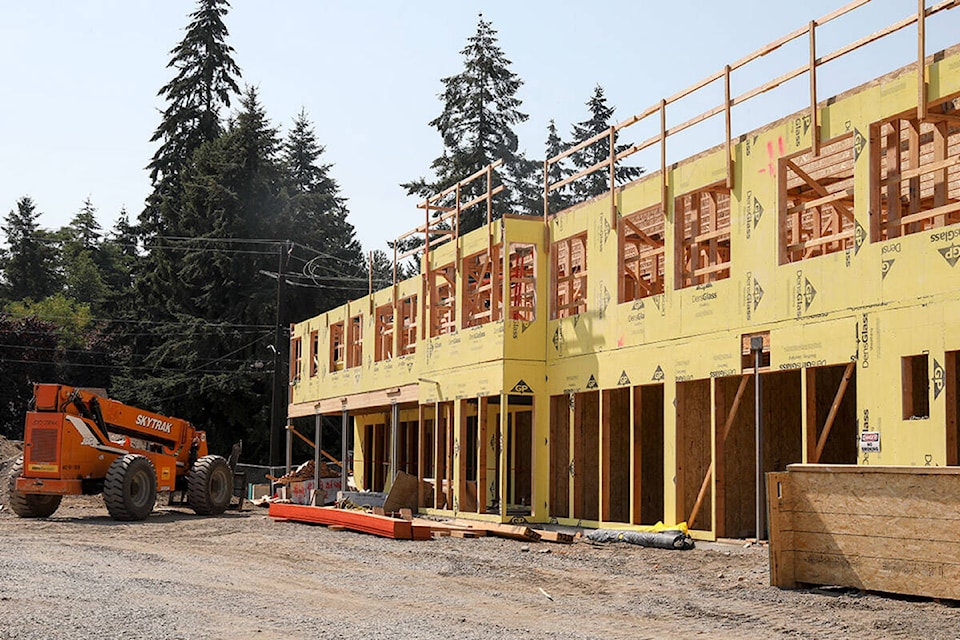The Regional District of Nanaimo is achieving most of the goals in its growth strategy, with the exception of trying to make housing more affordable.
The RDN board was presented with a report this week on its regional growth strategy, which provided a progress report on a range of goals. According to the report, of the 19 indicators, the RDN is moving toward 11 targets, moving away from four targets and remaining stable on the other four targets.
Staff noted that the RDN hasn’t been able to make progress toward its goal of facilitating the provision of affordable housing, and is in fact moving in the other direction. The report noted that in 2020, 87 per cent of tenants paid more than 30 per cent of their before-tax income on rent, whereas in 2015, only 47 per cent of tenants paid more than 30 per cent of their income on rent.
“The continued rise in housing cost and rental prices and growing disparity between income and housing cost has moved the region away from the goals of adaptable, accessible, affordable and attainable housing,” the report noted.
The RDN did point out, however, that it is progressing on some other housing goals, such as improving diversity of housing types, increasing density within growth containment boundaries, and increasing the number of homes close to shops, services and amenities.
READ ALSO: Regional District of Nanaimo needs more rental housing, study finds
The RDN showed progress on several other goals. The region has shown steady progress in reducing water consumption, as the number of water connections is rising but usage is decreasing. In the City of Nanaimo, for example, water use is down 23 per cent since 2009 while population has gone up 17 per cent. Trends are similar across the RDN’s water service areas.
Public transit use is another area in which the RDN has identified a “positive upward trend,” as bus rides have risen from 17.5 trips per person to 30.8 over the past four years.
The RDN reported that it is continuing to make progress on goals of adding park land and trails, with nine hectares of publicly owned land and one kilometre of maintained trails added in 2020.
As well, the regional district made slight progress in reducing the amount of waste per person going to the landfill, according to its most recent data.
Other than housing, an area in which the RDN regressed from its targets was with the unemployment rate and labour force participation, “a result of COVID-19,” according to the report. Asked how the regional district can influence those rates, Kim Fowler, RDN manager of sustainability, told directors that land-use decisions can impact economic opportunities within the region.
“If we had a shortage of industrial land, which some of the more recent studies are indicating, then perhaps we should be considering adding more industrial land when we’re renewing official community plans or zoning bylaws,” she said. “That provides more opportunity for perhaps not just industrial, but employment lands in general, to be developed.”
Lehann Wallace, French Creek director, said she’s heard from residents who wonder how many building permits the RDN can issue when there’s “no light on the horizon” for improving access to health care for existing residents. People also have concerns about water supply, she said.
“Without those two things, we’re certainly growing in a direction that’s causing a lot of duress for people,” Wallace said. “So how do we adjust the [regional growth strategy] to work along with the ministry jurisdictions, instead of what’s happening now?”
Fowler replied that the growth strategy is “broad and high-level policy,” and said there are options to review the strategy and add advocacy and goal statements, or address issues through other RDN policies.
READ ALSO: RDN strategic plan sets out vision and priorities of the new board
editor@nanaimobulletin.com
Like us on Facebook and follow us on Twitter
